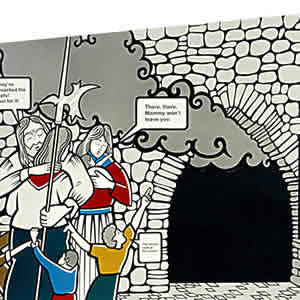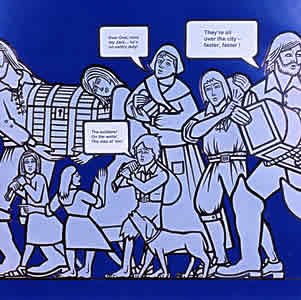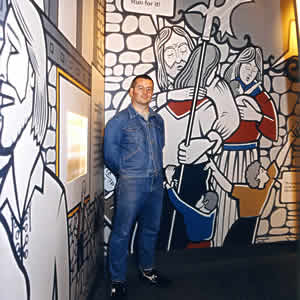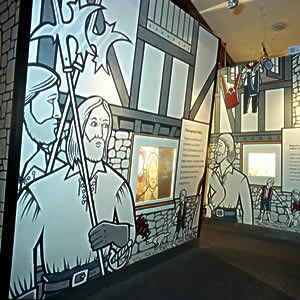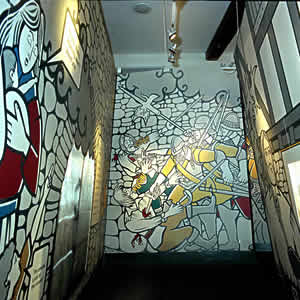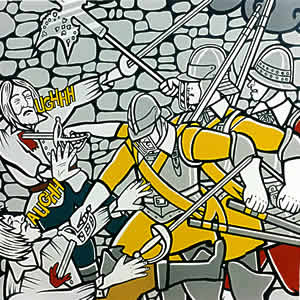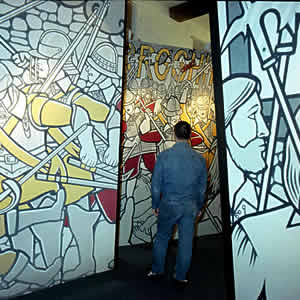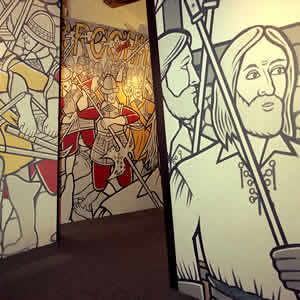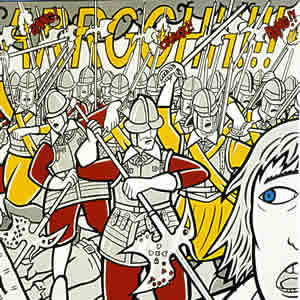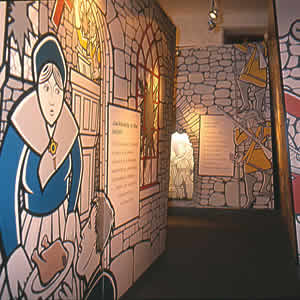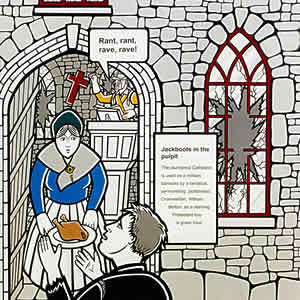Waterford Treasures 1999
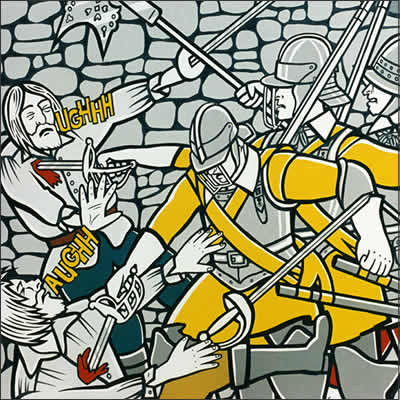
Cromwell Title.
During July 1998 I was commissioned by Event Ireland Ltd to produce a series of ten illustrations as part of a heritage centre for Waterford City called ‘Waterford treasures’. Event Ireland Ltd was a subsidiary of a larger company based in London called Event Ltd. The brief stated that the illustrations should describe the siege of Waterford by Oliver Cromwell son-in-law Henry Ireton and his New Model Army in 1650. The illustrations were to be about A0 size and had to be drawn to scale and designed so that they could be enlarged photographically, given wooden supports and fitted together into one large three dimensional piece. The idea was to create an environment into which the viewer could be immersed. This large scale work would be a part of a larger exhibition called ‘Waterford Treasures’ that presented the historical heritage of Waterford.
Having produced a number of visual treatments it was decided that a Comic Book or Graphic Novel style would persuasively and clearly communicate these historical events to a wide audience (see fig.1 to fig.13).
Research was done using text books from various libraries into period dress, military uniforms, period buildings and other elements. The dominant colours would be black, white and grey with a graphic use of primary colours red yellow and blue – colour which were used in the uniforms of Cromwell’s New Model Army. I produced rough drawings on light semi-transparent layout paper which when approved were recreated on archive quality cartridge paper. Over the next eight months these drawings were produced. In February 1999 they were collected by Event Ireland Ltd. Enlarged photographically, constructed into large scale partitions that when within the larger context of the exhibition became an immersive environment and passageway through which the viewer could experience a visual interpretation of the siege of Waterford of 1650.
The words typeset and inserted into the speech bubbles were not chosen by the me. A local politician was given this privilege. This large scale work was installed from May 1998 until 2011 when the entire exhibition was removed from its premises in the Granary to a smaller premises called Reginald’s tower.
In 2003 the exhibition was one of seven specially commended from a shortlist of sixty-one in the 2002 European Museum of the Year Award.

